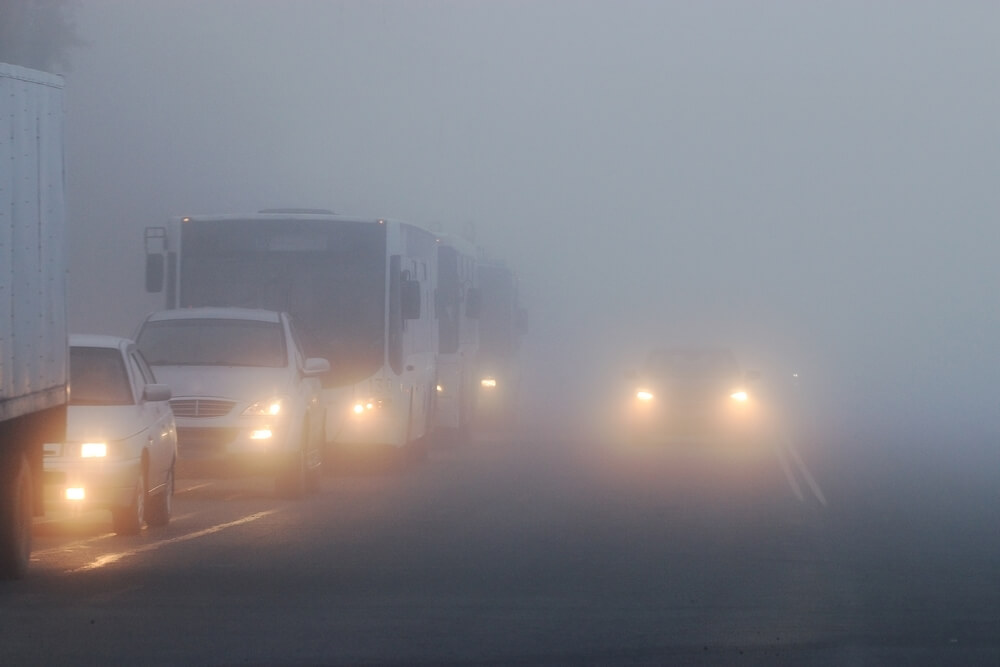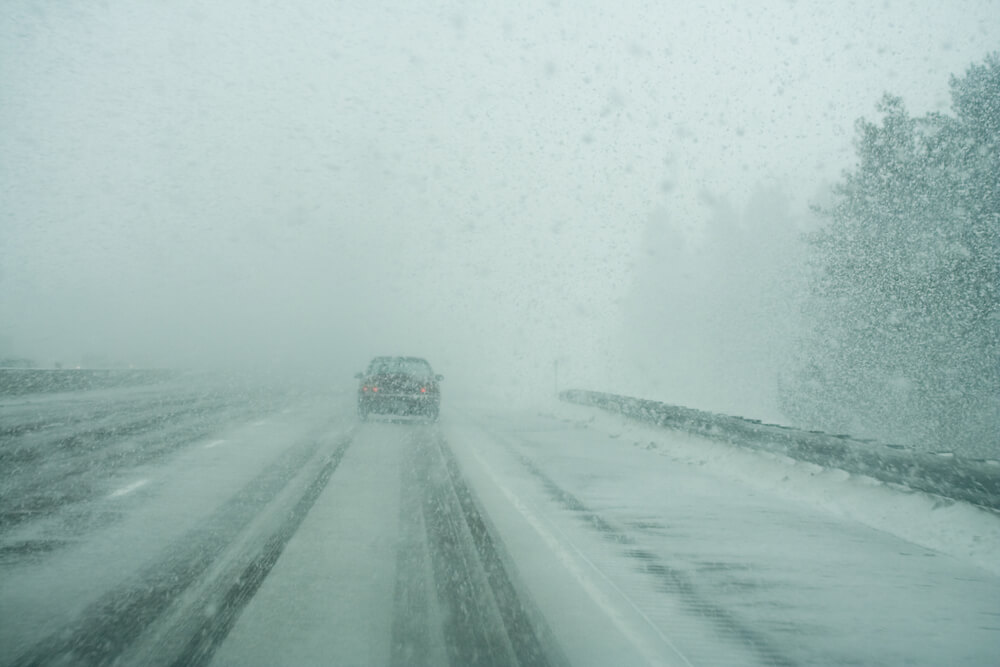victims for over 25 years.
Navigating the Unexpected: What to Do When You Can’t See the Road While Driving

Driving can sometimes present unexpected challenges, and one such situation is when visibility becomes limited, making it difficult to see the road ahead. Any driver knows this can be really scary.
Whether it’s due to heavy rain, fog, snow, or other adverse weather conditions, losing sight of the road can be a stressful and potentially dangerous experience for any driver.
However, by following a few essential guidelines and staying calm, you can navigate through such circumstances safely. In this article, we will explore what to do when you find yourself unable to see the road while driving.
Stay Calm and Focused:
It goes without saying that maintaining a calm and composed mindset is crucial when faced with reduced visibility. Panicking or becoming overly anxious can impair your decision-making abilities and increase the risk of accidents. Remind yourself to stay focused and concentrate on the task at hand – safely maneuvering through the challenging conditions.
Slow Down and Increase Following Distance:
Reduce your speed significantly to match the limitations imposed by the reduced visibility. Slowing down allows you to have more time to react to unexpected obstacles or changes in the road ahead. Additionally, increase the distance between your vehicle and the one in front of you. This provides an extra safety buffer and reduces the chances of a collision.
Utilize Vehicle Lights:
Turning on your headlights is essential to increase your visibility to others on the road. In adverse weather conditions, use low-beam lights or fog lights if your vehicle is equipped with them. Avoid using high beams as they can reflect off fog or snow particles, further reducing visibility.
Use Defrosters and Wipers:
If the reduced visibility is due to rain or snowfall, ensure that your windshield wipers are functioning correctly. Clear any snow or ice from the windshield before you start driving. Additionally, activate your defrosters to prevent fogging of the windshield and windows, which can further obstruct your view.
Follow Lane Markings and Roadside Indicators:
When visibility is poor, focus on following the lane markings on the road. They serve as a guide and help you stay in your designated lane. Additionally, be aware of any roadside indicators, such as reflectors or delineators, that can provide a reference point and help you maintain your position on the road.
Listen for Auditory Cues:
In situations where visual cues are limited, rely on your hearing to gather information about the road ahead. Listen for sounds like approaching vehicles, honking, or emergency sirens. These auditory cues can provide valuable information about the presence of other vehicles or potential hazards.
Pull Over if Necessary:
In extreme cases of limited visibility where you feel uncomfortable or unsafe continuing to drive, find a safe place to pull over. Look for designated rest areas, parking lots, or other safe locations away from the main flow of traffic. Once parked, turn on your hazard lights to alert other drivers of your presence.
Encountering situations where you can’t see the road while driving can be challenging, but with the right approach, you can navigate through them safely. Remember to stay calm, reduce your speed, and use your vehicle’s lights effectively.
Pay attention to lane markings, roadside indicators, and auditory cues, and pull over if conditions become too hazardous. By following these guidelines and using common sense, you can ensure your safety and that of other road users when visibility is limited.

There are several legal implications to consider in the event of a car accident occurring during poor weather conditions causing reduced visibility.
Firstly, it is important to note that drivers have a duty of care to operate their vehicles safely, regardless of the weather conditions. If it is determined that a driver failed to exercise reasonable care and caused the accident, they may be held liable for any resulting damages or injuries.
Additionally, if the accident occurred due to a driver’s failure to adapt their driving behavior to the weather conditions, they may be found negligent. It is crucial to follow traffic laws and adjust driving speed and distance accordingly in order to maintain a safe environment for all road users.
We would advise you to call the police and report the accident promptly, as well as contact your insurance company, as they will guide you through the claims process and handle any legal matters that may arise.
Finally, we recommended you consult a legal professional who specializes in personal injury or car accident cases to ensure that your rights are protected and to navigate any potential legal proceedings. We are here to help.
Free Consultation
Search For
Recent Articles
- What Factors Affect the Outcome in a Personal Injury Case in Colorado?
- Are all motorcycles created equal?
- Frequently Asked Questions about Personal Injury Attorneys
- How Do Personal Injury Attorneys Calculate Future Medical Expenses in a Car Crash Settlement?
- Ways to Increase Your Visibility When Riding Your Bicycle in Denver
Categories
- Arvada
- Aurora
- Auto Accident eBook
- Auto Insurance
- Bicycle
- Bicycle/Motorcycle Accidents
- Bodily injury
- Car accidents
- Centennial
- Colorado
- Colorado Legislature
- community
- Concussion
- Denver
- distracted driving
- DUI Accidents
- Englewood
- Events
- Flood Insurance
- Fort Collins
- Highlands Ranch
- Hit and Run
- In The News
- insurance companies
- Lakewood
- Littleton
- Marijuana DUI
- Motorcycle Accidents
- Motorcycle Insurance
- Motorcycle Law eBook
- Motorcycles
- Newsletter
- Pedestrian
- Personal Injury Law
- Safe Driving
- Safety
- Scooters
- technology
- Thornton
- Tips
- Uncategorized
- vibrio vulnificus bacteria
- Videos
- Westminster
- Winter Driving
Archive
- April 2024
- March 2024
- February 2024
- January 2024
- December 2023
- November 2023
- October 2023
- September 2023
- August 2023
- July 2023
- June 2023
- May 2023
- April 2023
- March 2023
- February 2023
- January 2023
- November 2022
- September 2022
- April 2022
- March 2022
- February 2022
- January 2022
- December 2021
- November 2021
- October 2021
- September 2021
- August 2021
- July 2021
- June 2021
- May 2021
- April 2021
- January 2021
- December 2020
- November 2020
- October 2020
- September 2020
- August 2020
- July 2020
- June 2020
- May 2020
- April 2020
- March 2020
- February 2020
- January 2020
- December 2019
- November 2019
- October 2019
- September 2019
- August 2019
- July 2019
- June 2019
- May 2019
- March 2019
- February 2019
- January 2019
- December 2018
- November 2018
- October 2018
- September 2018
- August 2018
- July 2018
- June 2018
- May 2018
- April 2018
- March 2018
- February 2018
- January 2018
- December 2017
- November 2017
- October 2017
- September 2017
- August 2017
- July 2017
- June 2017
- May 2017
- April 2017
- March 2017
- February 2017
- January 2017
- December 2016
- November 2016
- October 2016
- September 2016
- August 2016
- July 2016
- June 2016
- May 2016
- April 2016
- March 2016
- February 2016
- January 2016
- December 2015
- November 2015
- October 2015
- September 2015
- August 2015
- July 2015
- June 2015
- May 2015
- April 2015
- February 2015
- December 2014
- November 2014
- October 2014
- September 2014
- July 2014
- June 2014
- May 2014
- April 2014
- March 2014
- February 2014
- January 2014
- October 2013
- October 2012
- September 2012
- August 2012
- July 2012
- February 2012
- August 2011
- March 2011
- October 2010